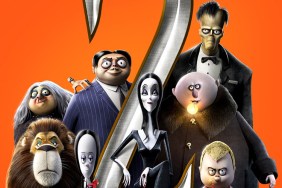Greetings, my dear students, to another edition of the Free Film School. This week’s lecture is going to be nothing more than an extended essay on Yasujiro Ozu’s excellent 1953 family drama Tokyo Story. It may seem obscure to the casual film-goer, but it really is – without hyperbole – one of the best movies ever. Stick around. You may learn something.
The journey on the road of cinema, if traveled long enough, will eventually lead you to the greats. If your interest in film is deep enough (and students of the Free Film School are, I’m assuming, interested), you will start to pick up names like Robert Bresson, Rainer Werner Fassbinder, and Andrei Tarkovsky. These people are masters of the craft, and yet only seem to be known in the circles of scholars and cinephiles.
Their films are challenging to say the least, and deal with the kind of adult themes that most casual film viewers find a chore: the hurtles of faith, the trials of your own sexuality, the prisons of your misanthropy, the crushing horror of your unforgotten memories. And in addition to addressing macroscopic topics, their utilization of the cinematic craft is second to none. These are artists who have truly discovered new ways to tell a story, to present images, to employ a stark and stellar realism, to exploit the cinematic form to its fullest potential. They are bold experimenters, and unconventional thinkers.
Like one might say of watching Citizen Kane: it’s easy to watch a good movie, but it’s kind of threatening to sit and watch “The Best Film Ever Made.”
Which is why so many casual film watchers are unfamiliar with the name Yasujiro Ozu, and why so many scholars and cinephiles pronounce his name in hushed tones. Ozu is certainly one of cinema’s finest filmmakers.

The problem with stories about what we do not say to one another is that they must, by necessity, possess no action or dramatic confrontations. We climax-junkie modern-day westerners have a lot of trouble with that. If we think of a film whose important emotional moments are never spoken or shown, we balk. And if we think “family drama” we usually either jump straight to the lurid grossness of the soap opera, or the dark and horrible suicide-laden plots of an old Russian novel we hated to read in high school.
The thing about Ozu’s films, though, is if you slow down a little, watch them quietly and restfully, meditate on the shots he is very, very deliberately showing you, you enter a strange meditative place. You begin to sense all the pain under the surface, you see the humor and the telltale behaviors that reveal the characters’ true intentions. And by then end, you are weeping for everything that hasn’t been said.
Yasujiro Ozu, born in Tokyo in 1903, has directed a total of 54 films, cranking out as many as six a year in the early stages of his career. He made his first film in 1927, but it wasn’t until 1932, 22 films later, that he made the semi-autobiographical film I Was Born, But…, and started to catch the eyes of cineastes and Americans. His early films have a quicker pace, and a more sensational approach to their stories, but the Ozu stamp was slowly growing.
It wasn’t until 1953, though, that Ozu was to make his masterpiece, Tokyo Story. Tokyo Story contained all of the Ozu’s usual familial and post-war interests, but was the first to make his craft so clear and beautiful.

Tokyo Story is about an elderly couple Shukishi and Tomi (Ozu regular Chishu Ryu and his cheerful chubby wife played by Chieko Higashiyama) who leave their rural home to visit their adult children in the bustling madness of post-war Tokyo. Their son, Koichi (So Yamamura) is a doctor, and has a put-upon wife (Kuniko Miyake), and two young sons. Their daughter, Shige (Haruko Sugimura), is persnickety and runs a beauty parlor. They have another son who died in the war, and also visit with his widow, Noriko (Japan’s great star Setsuko Hara).
The two children see their parents less as welcomed visitors, and more as scheduling conflicts. They are very busy people, and can think of nothing to say to or do with their parents. They introduce their children, but they run away. Shukishi and Tomi smile through all of this, making quiet excuses for their children’s poor behavior (“This must be what it’s like to live in Tokyo.” “Oh I guess he’s just afraid.”). The children think to send their parents to a spa for a few days, less as something they would enjoy, and more as an activity to get them out of the way. In one scene, Koichi brings home some cakes for his parents. Shige looks at them, and remarks that they are far too expensive for elderly people, and the two of them continue their conversation, casually eating the cakes themselves.
Surely you’ve seen this dynamic in family gatherings and visits before. The people reunite, and don’t talk about anything of importance. They, instead, go on a frantic race to stave off boredom.
During their visits with Noriko, they are treated humbly and civilly for the only time during their visit. At one quiet moment, the elderly couple is sitting alone. “Let’s go home” they say.
They return home. Tomi dies unexpectedly.








